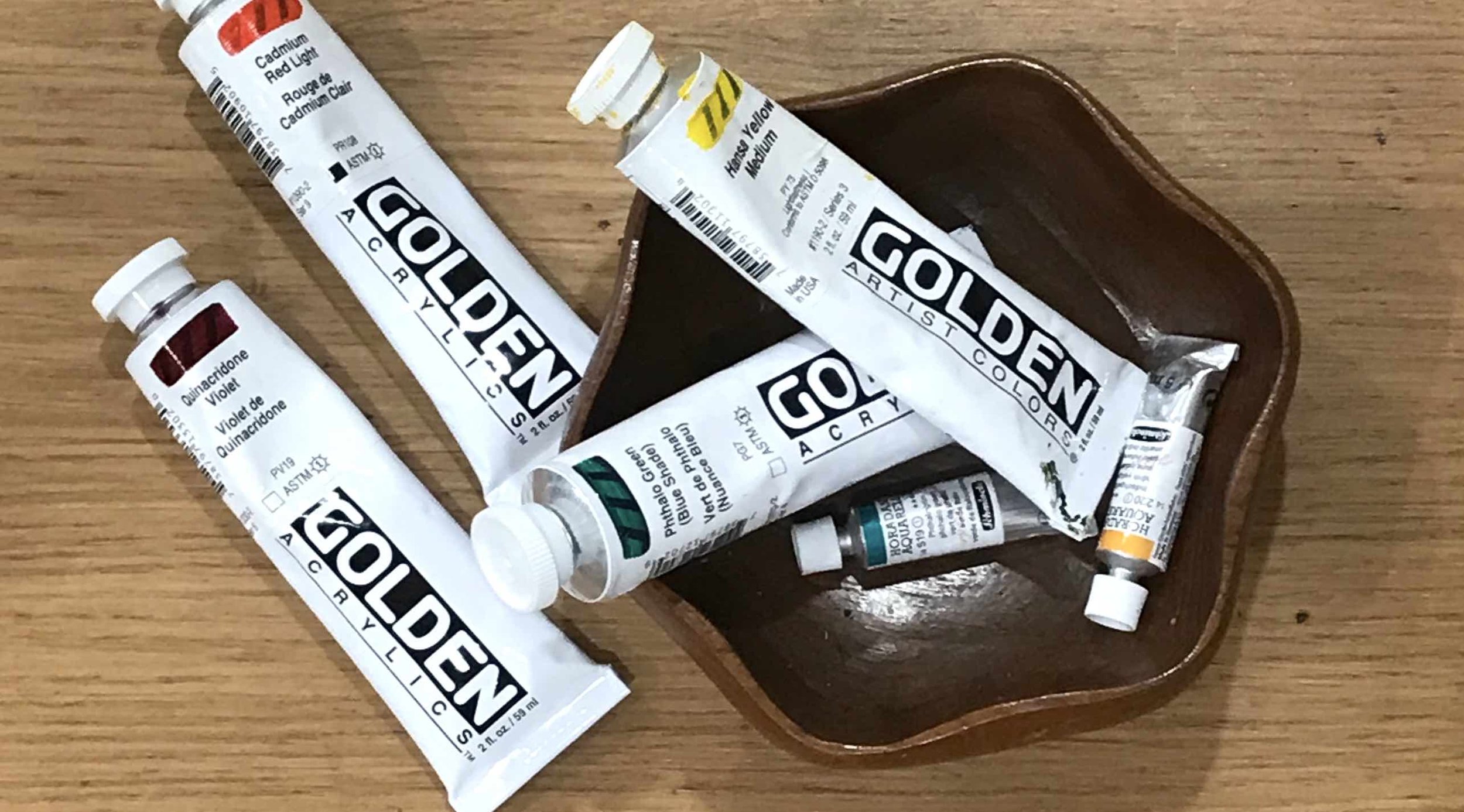Artist beware: Why you shouldn’t water down your acrylic paints and use them like watercolours!
Hello fellow artists and creatives and hopefully there are some art nerds out there too! Today, let's delve into a topic that often stirs debate in the art world – the use of acrylic paints in a manner that mimics watercolour techniques. While experimentation is a crucial part of the artistic process, there are essential reasons why diluting your acrylics with water might not be the best approach. In this post, we'll explore why opting for proper acrylic mediums, like glazes, is a game-changer in preserving the integrity of your artwork.
1. Acrylic Binder Breakdown: The Achilles Heel of Watered-Down Acrylics
Acrylic paints are formulated with a binding agent, or polymer emulsion, that plays a pivotal role in holding the pigments together and adhering them to the painting surface. Diluting acrylics excessively with water compromises this binder, leading to a breakdown of the paint's structural integrity. As a result, the paint film becomes more susceptible to cracking, flaking, and even peeling off over time.
2. The Mirage of Transparency: Watered-Down Acrylics vs. Glazing Mediums
Many artists are drawn to watered-down acrylics for their seemingly transparent and watercolour-like effects. However, the allure of transparency can be achieved more effectively and safely through the use of dedicated acrylic mediums, such as glazing mediums. These mediums maintain the acrylic binder's integrity while imparting the desired translucency, preventing the risks associated with excessive water usage.
3. Achieving Luminosity with Glazing Techniques
One of the joys of working with acrylics lies in their versatility. Rather than diluting your paints to achieve translucency, consider exploring glazing techniques. Glazing involves layering thin, transparent coats of paint over dried layers, allowing light to penetrate and bounce back, creating luminosity and depth. This method not only preserves the binding qualities of the acrylics but also enhances the overall visual appeal of your artwork.
4. Building Layers for Lasting Impact
Acrylics thrive on layering. By using glazes or other mediums designed for acrylics, you can build layers with precision and control. This layering process not only contributes to the richness of your colours but also ensures the longevity of your artwork, as each layer adheres securely to the one beneath.
Conclusion: Embrace the Potential, Respect the Medium
In the realm of art, experimentation is celebrated, but understanding the materials at your disposal is equally crucial. While the allure of watercolour-like effects with acrylics may be tempting, the long-term consequences on your artwork's stability are substantial. Embrace the potential of acrylic mediums like glazes, respecting the medium's inherent properties to create vibrant, lasting masterpieces.
Remember, every brushstroke is a journey, and by choosing the right path, you ensure that your artistic endeavours stand the test of time. Happy painting!

